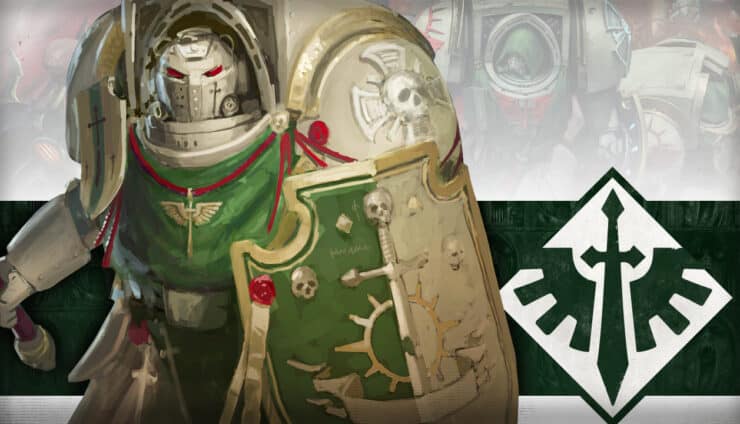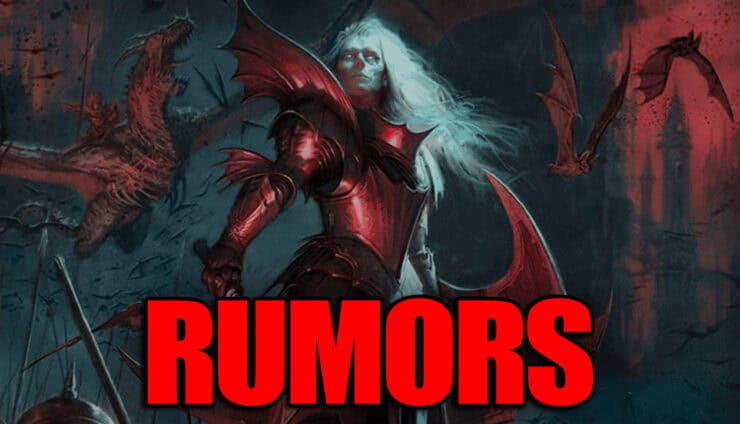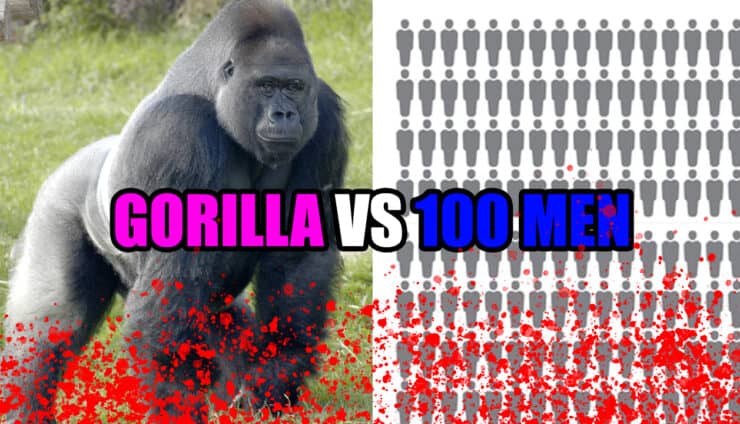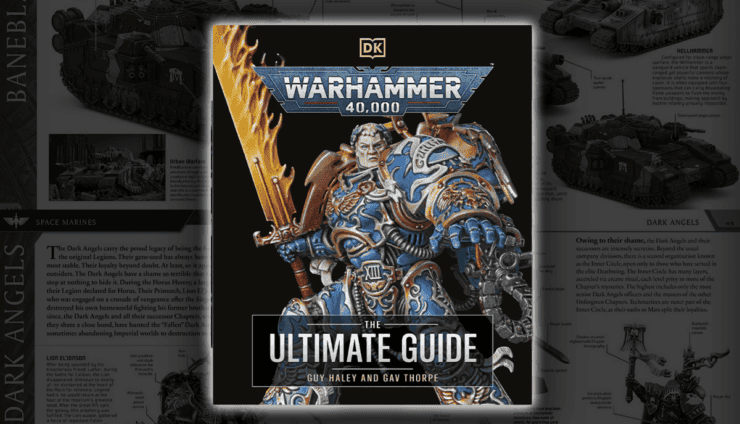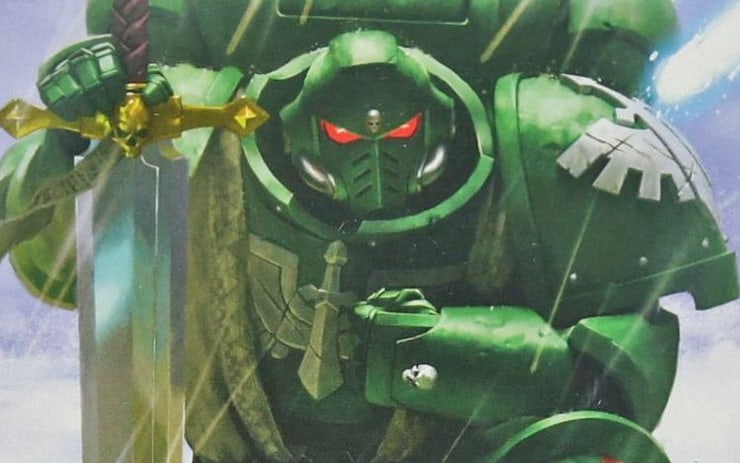 Uncover the secrets of the Dark Angels Space Marines, from playstyles to lore to Lion El’Jonson, and learn how to build a competitive Warhammer 40k army.
Uncover the secrets of the Dark Angels Space Marines, from playstyles to lore to Lion El’Jonson, and learn how to build a competitive Warhammer 40k army.
Updated January 2nd 2025, by Rob Baer with new information and links to relevant content.
The galaxy is vast, grim, and full of secrets, but few factions hold their cards closer than the Dark Angels. Known for their stoic demeanor and shadowy past, this enigmatic chapter brings a unique flavor to Warhammer 40k. If you’ve ever been tempted by the allure of green armor and secretive agendas—or just want to crush your opponents with a mix of tactical flexibility and relentless precision—you’re in the right place.
This guide covers the essentials of the Dark Angels army, from their fascinating lore to the strategies that make them a force to be reckoned with on the tabletop. Ready to turn the Lion’s teachings into victory? Let’s roll up our sleeves and get into it.
Introduction to Dark Angels in Warhammer 40k
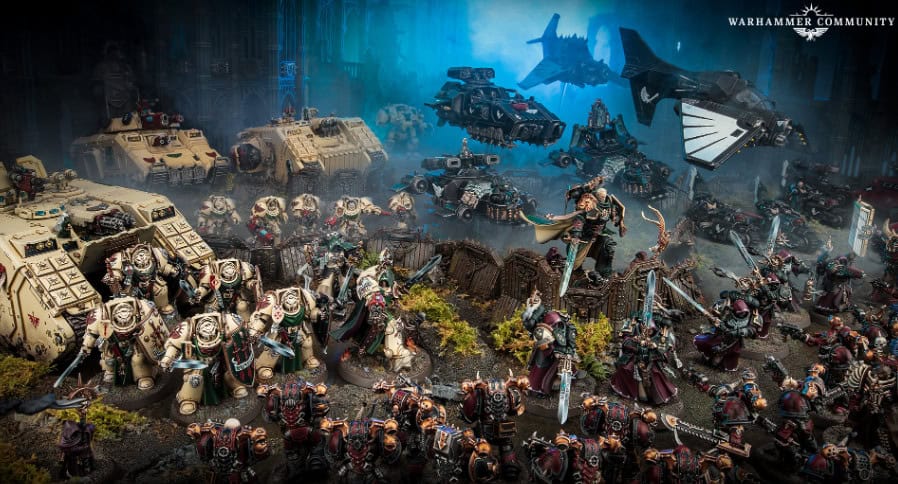
Their Primarch, Lion El’Jonson, embodies this duality: a tactical genius with an air of mystery that echoes through the ranks of his sons. Whether clad in dark green power armor or the bone-white of the Deathwing, every Dark Angel carries the burden of their chapter’s past, a history rife with treachery and redemption. This tension between duty and secrecy fuels their identity, setting them apart from other Space Marines 40k chapters.
In addition to their captivating lore, Dark Angels offer a unique playstyle in the game, blending flexibility, resilience, and devastating firepower. But let’s not just wax poetic—there’s work to do if you want to build and field a 40k Dark Angels army that can hold its own in the grim darkness of the 41st millennium.
Playing Dark Angels
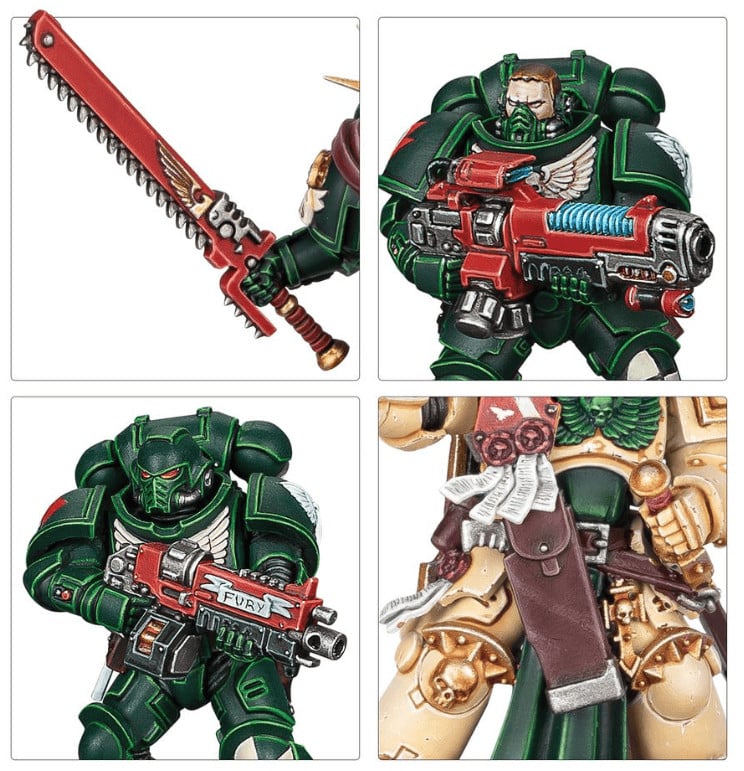
- Deathwing Terminators: These are your unyielding tanks on two legs. With their iconic bone-colored armor, Deathwing units are built for durability. Their invulnerability saves and toughness make them perfect for holding objectives while shrugging off enemy fire.
- Ravenwing Bikes and Speeders: If the Deathwing are your fortress, the Ravenwing are your scalpel. These fast, black-clad units excel at hit-and-run tactics, zipping around the battlefield to disrupt enemy plans or seize key positions. Their synergy with characters like Sammael and Asmodai can add devastating punch.
- Tactical and Primaris Marines: The backbone of the army, these squads bring versatility. Whether it’s a Combat Patrol Dark Angels setup or a larger force, these units provide the staying power to complement the specialized wings.
The real magic happens when these components work together. A well-balanced army can overwhelm opponents with a combination of resilience, speed, and firepower.
Strategic Tips for the Dark Angels Army
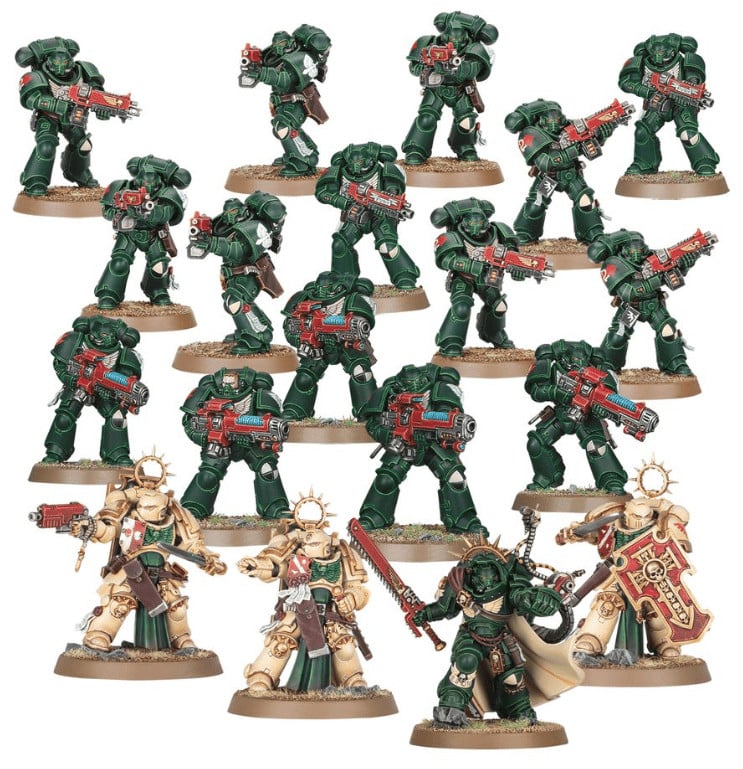
The Inner Circle rule gives many of your units a defensive boost, making them harder to shift from key objectives. This ability can turn a seemingly fragile position into an unbreakable stronghold. Pair this with characters like Azrael to further enhance durability and utility.
2. Master the Combat Doctrine
Dark Angels shine when playing to their Space Marines Combat Doctrine bonuses in 40k. They gain extra efficiency in different phases of the game, whether it’s overwhelming firepower in the Devastator Doctrine or relentless melee attacks in the Assault Doctrine. Smart timing is everything.
3. Use Synergies Wisely
Characters like the Lion El’Jonson (when available) or a Dark Angels Dreadnought can elevate the performance of your squads. For example, Deathwing Knights paired with a Chaplain or Librarian can become nigh-unstoppable, while Ravenwing squads can wreak havoc when paired with a Talonmaster.
4. Play the Mission
Dark Angels excel at playing the objective game. Their resilience makes them ideal for holding key points, while their speed allows them to contest objectives across the board. Keep your eyes on the mission to outmaneuver and outlast your opponent.
How to Build a Competitive Dark Angels List
Building a Dark Angels army isn’t just about picking cool models (though who can resist the allure of 40k Dark Angels painted to perfection?). It’s about creating a force that synergizes well and leverages the chapter’s strengths.
Step 1: Choose a Detachment Style
Start by deciding which wing to lean into. Are you going for a Ravenwing-heavy 40k Dark Angels army with speed and precision or a Deathwing-focused force that anchors the battlefield? A balanced approach often works well, especially for newcomers, allowing you to experiment with both playstyles.
Step 2: Select Key Units
Here are some staples for a competitive list:
- Deathwing Terminators: These units are essential for holding ground and dishing out punishment.
- Ravenwing Black Knights: High mobility and plasma weapons make them a devastating threat.
- Azrael: As a character, Azrael provides powerful buffs, from invulnerable saves to tactical flexibility.
- Dark Angels Dreadnoughts: Versatile and durable, they bring heavy firepower to your list.
Step 3: Equip for the Meta
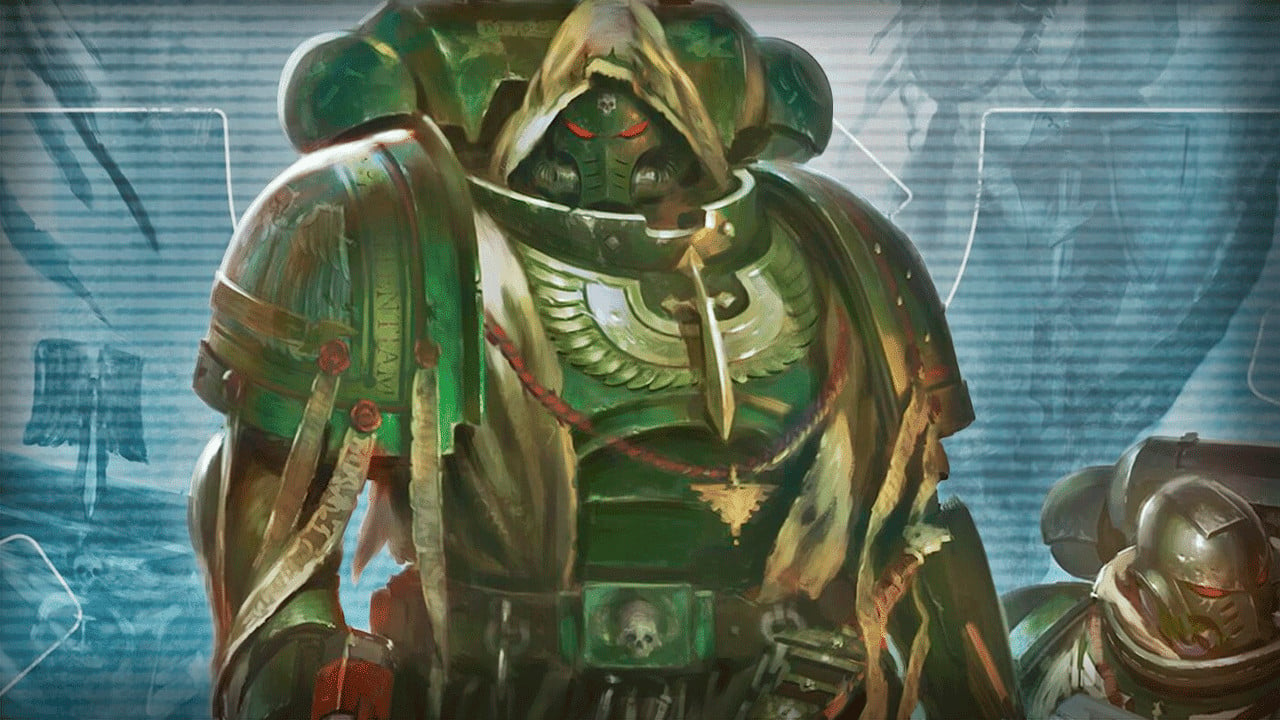
Step 4: Add the Personal Touch
Finally, customize your force with thematic elements like Cypher 40k or Fallen Space Marines Angels 40k narratives. Whether you’re aiming for aesthetic cohesion with 40k Dark Angels art or building around a favorite character, personalization adds a satisfying layer to the game.
To start playing them, you will need a Codex book or access to a reference site like Wahapedia, or the official Warhammer 40k army builder app (subscription required for most up-to-date rules.) With these tips in mind, your army will be ready to tackle any foe on the tabletop.
Understanding the Dark Angels Chapter
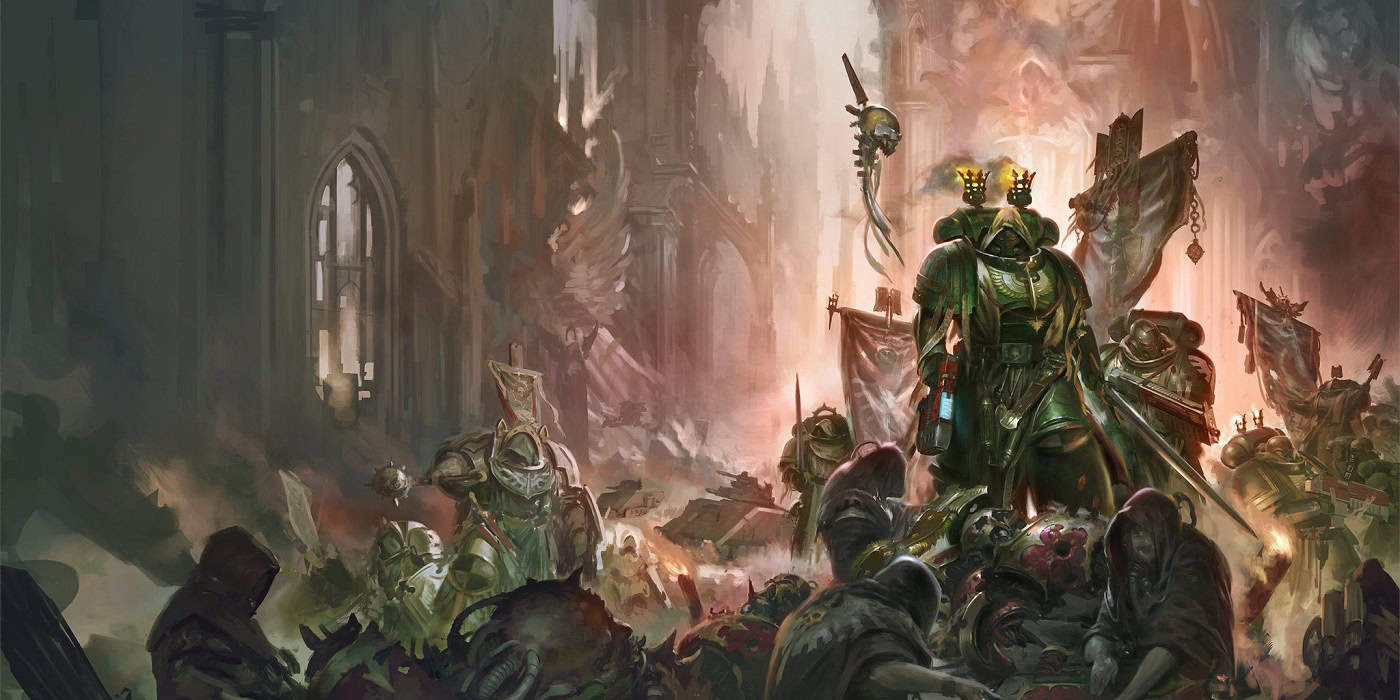
At the heart of the chapter lies a duality. While they project the noble image of loyal protectors of humanity, their hidden mission to atone for the sins of their past defines much of their identity. This covert agenda is felt across their units, strategies, and even the personalities of their most iconic leaders.
Origins of the Dark Angels
The Dark Angels 40k chapter traces its roots to the Great Crusade, where they served as the Emperor’s vanguard, taking on the galaxy’s most harrowing challenges. Their Primarch, Lion El’Jonson, was discovered on Caliban, a world of knightly orders and ferocious monsters. The Lion brought the order and discipline of Caliban’s knights into his legion, shaping them into a force unlike any other.
However, their noble beginnings were soon overshadowed by tragedy. During the Horus Heresy Dark Angels saga, their homeworld became a battlefield, torn apart by betrayal. This event marked the birth of the Fallen Angels and set the Dark Angels on their secretive quest for redemption.
Their mission? Hunt down the Fallen and bring them to justice, all while guarding this shameful chapter of their history from the prying eyes of the Imperium.
Significance of Lion El’Jonson
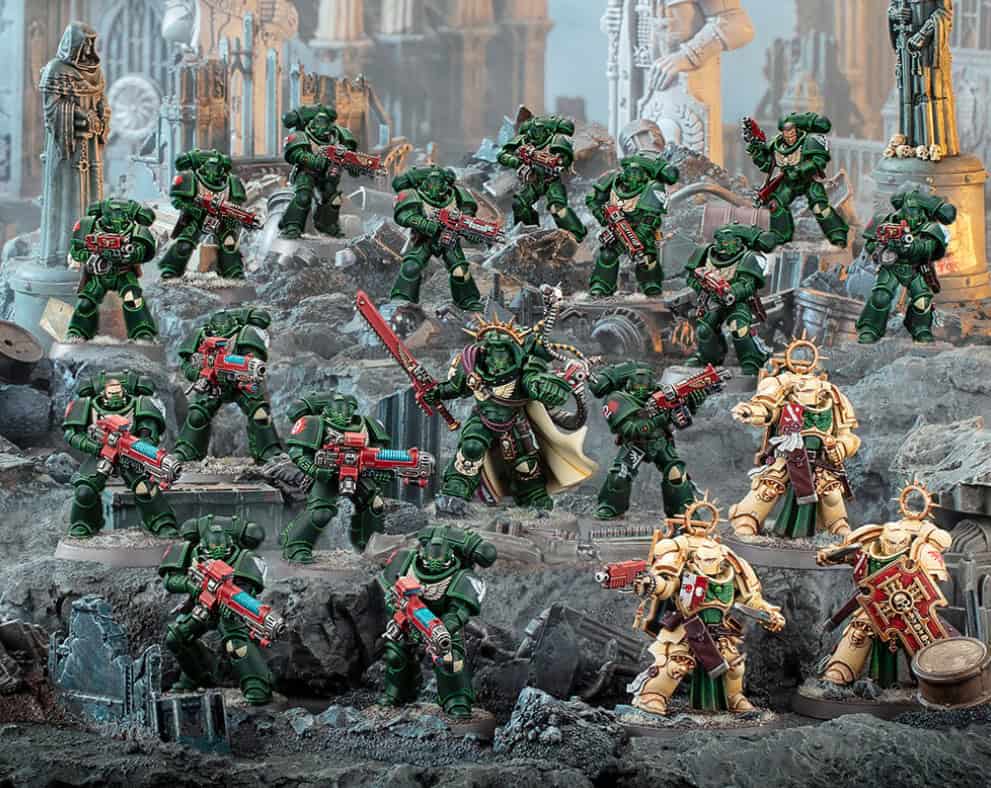
In the present narrative of Warhammer 40k Dark Angels, the Lion’s legacy looms large among Space Marines. His mysterious reappearance in the game’s ongoing story has revitalized interest in the chapter, bringing his tactical and moral complexities back into the spotlight. The Lion represents both the hope of redemption and the weight of duty, embodying the chapter’s eternal struggle between their noble purpose and their shadowy past.
The Myth and Lore Behind the Dark Angels
The lore surrounding the Dark Angels 40k chapter is filled with layers of intrigue and myth. Their pursuit of the Fallen Angels 40k is a cornerstone of their story, driving much of their secretive nature. These Fallen, once members of the chapter, betrayed the Emperor during the Horus Heresy. Capturing or killing them is not just a matter of vengeance but an obsessive mission to preserve the chapter’s honor.
This obsession extends to the Inner Circle 40k, a secretive group within the chapter that guards the truth of the Fallen. Knowledge of this inner cabal is so restricted that even the chapter’s rank and file are often left in the dark. For those who love a narrative filled with hidden agendas and moral dilemmas, the Dark Angels deliver in spades.
The mythos is further enriched by their ties to legendary figures like Luther, the once-trusted confidant of the Lion who became a key player in the chapter’s darkest hour, and Cypher 40k, a mysterious figure whose true motives remain unknown. These elements add depth and complexity to the Dark Angels, making them a fan favorite.
Unique Traits of the Dark Angels
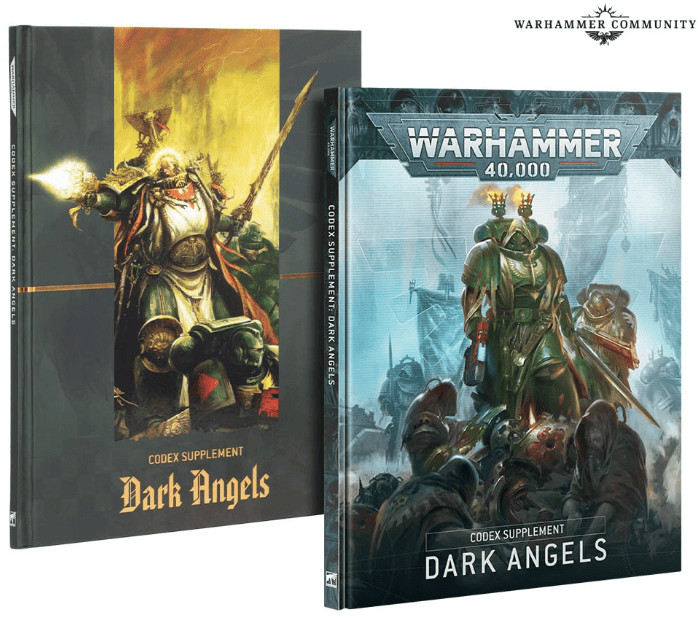
1. The Wings of the Chapter
The chapter operates in specialized formations, most notably the Ravenwing 40k and Deathwing Knights. The Ravenwing focuses on speed and precision, zipping across the battlefield with bikes and speeders, while the Deathwing brings heavy-hitting Terminators to lock down critical areas.
2. The Inner Circle and Resilience
The Inner Circle rule grants many of their units enhanced durability, reflecting their unshakable determination. This makes the Dark Angels one of the most resilient chapters in Warhammer 40k Dark Angels army lists.
3. Their Aesthetic and Customization
Whether you’re fielding Dark Angels painted 40k in the green of their Tactical squads or the white of their Deathwing, their models are a painter’s dream. Iconic symbols like robes, wings, and swords bring a medieval knightly feel to the grim darkness of the 41st millennium.
4. Iconic Characters
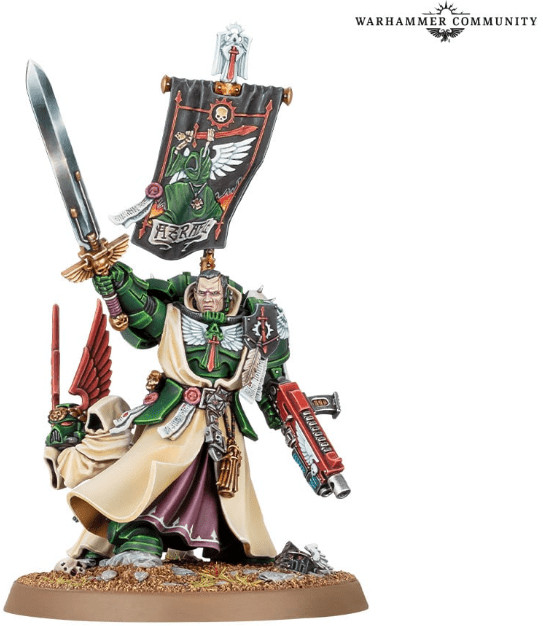
5. Tying It All Together
A combat patrol Dark Angels force, for example, might feature the speed of the Ravenwing paired with the resilience of the Deathwing, creating a dynamic and effective core. This synergy between speed, strength, and strategy makes the Dark Angels a competitive choice for players.
Through a combination of lore-rich themes, unique gameplay mechanics, and stunning models, the Dark Angels continue to be a standout chapter in the Warhammer 40k universe.
Key Units and Characters
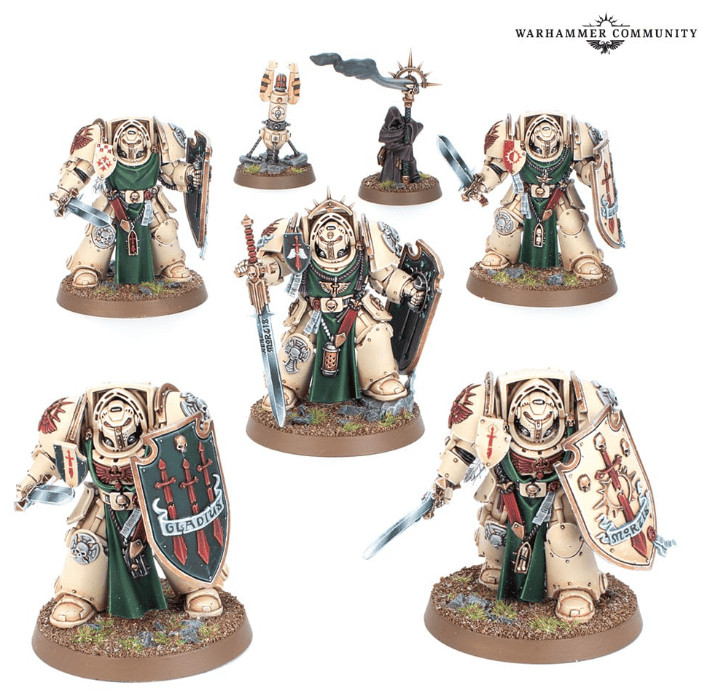
The Iconic Ravenwing and Deathwing
The Ravenwing and Deathwing aren’t just clever names—they’re the backbone of the Warhammer 40k Dark Angels identity. These two formations give the army its tactical depth and aesthetic flair, making them a favorite among players who enjoy versatility and strategy.
Ravenwing 40k: The Swift Hunters
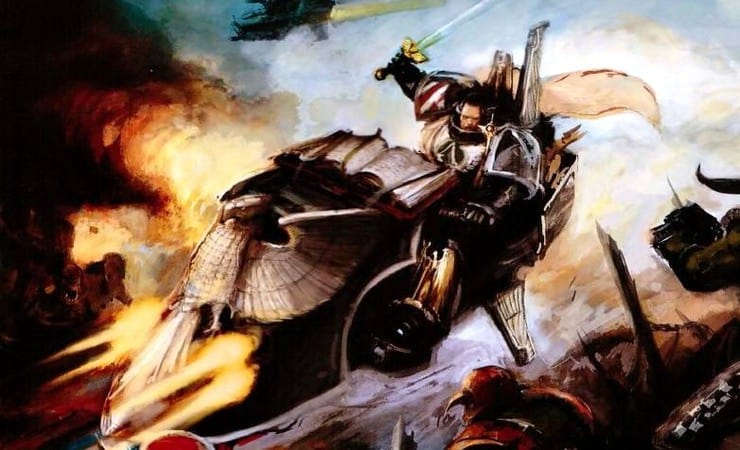
Key units in the Ravenwing include:
- Ravenwing Black Knights: Equipped with plasma weaponry, these units are the surgical tools of your army. They hit hard, strike fast, and can retreat before retaliation.
- Sammael: The Grand Master of the Ravenwing, Sammael leads from the front, combining leadership with deadly firepower.
- Ravenwing Talonmaster: Acting as a mobile command unit, the Talonmaster buffs nearby units while raining down fire from its own arsenal.
Deathwing: The Unbreakable Line
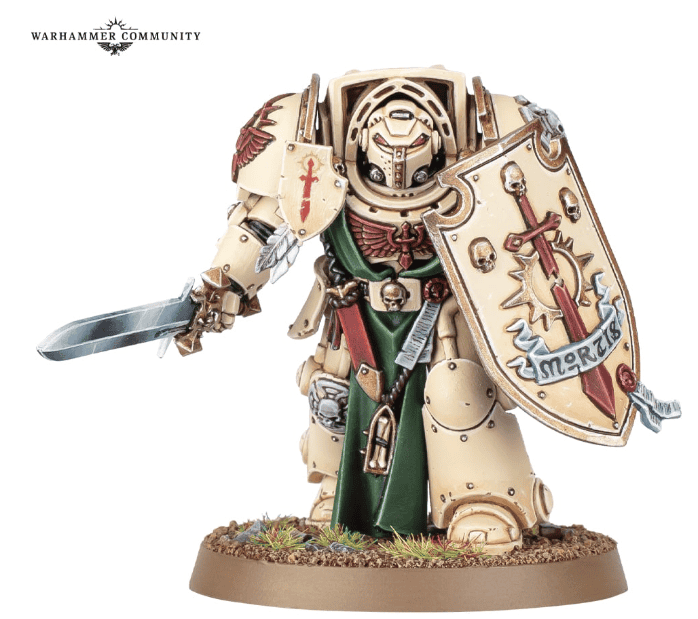
Key units in the Deathwing include:
- Deathwing Knights: Armed with maces and shields, these knights are a nightmare for any enemy that gets too close.
- Deathwing Terminators: With their invulnerable saves and powerful weapon options, these units are as reliable as they are fearsome.
- Belial: The Grand Master of the Deathwing, Belial excels at leading these elite warriors, amplifying their effectiveness on the battlefield.
The beauty of the 40k Dark Angels army lies in how these two formations complement each other. While the Ravenwing handles speed and disruption, the Deathwing anchors your force with unyielding strength. Together, they create a force that’s adaptable and deadly in equal measure.
Notable Characters: Cypher and Other Figures
No discussion of Warhammer 40k Dark Angels is complete without mentioning their iconic characters. From enigmatic anti-heroes to inspiring leaders, these figures add depth and personality to the army.
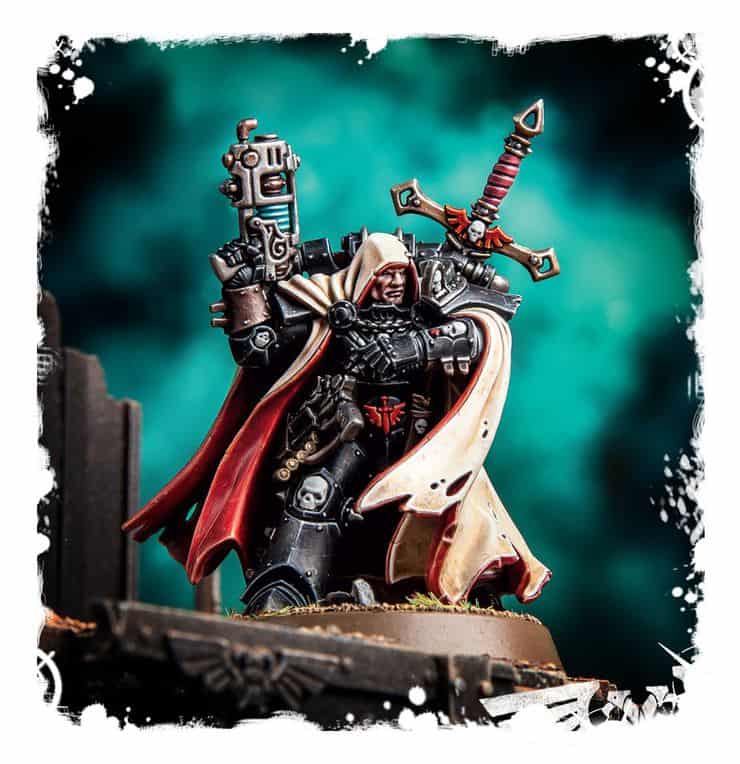
Few characters in Warhammer 40k are as intriguing as Cypher. A mysterious figure associated with the Fallen Angels 40k, Cypher operates in the shadows, his true motives hidden behind a veil of ambiguity. Armed with a pair of master-crafted pistols and carrying the Lion Sword—a weapon shrouded in its own legend—Cypher is a wildcard in the game’s narrative.
In gameplay terms, Cypher isn’t a standard part of a 40k Dark Angels army, but his presence on the tabletop can add a narrative twist, especially in campaigns where the Fallen Angels 40k storylines come into play.
Azrael 40k: The Supreme Grand Master
Azrael is the face of the Dark Angels 40k army, a character who embodies both the chapter’s nobility and its secretive nature. His Lion Helm grants an invulnerable save to nearby units, while his leadership ensures your army operates at peak efficiency. Azrael is an auto-include for many Combat Patrol Dark Angels lists due to his versatility and ability to enhance nearby units.
Asmodai: The Fearsome Interrogator-Chaplain
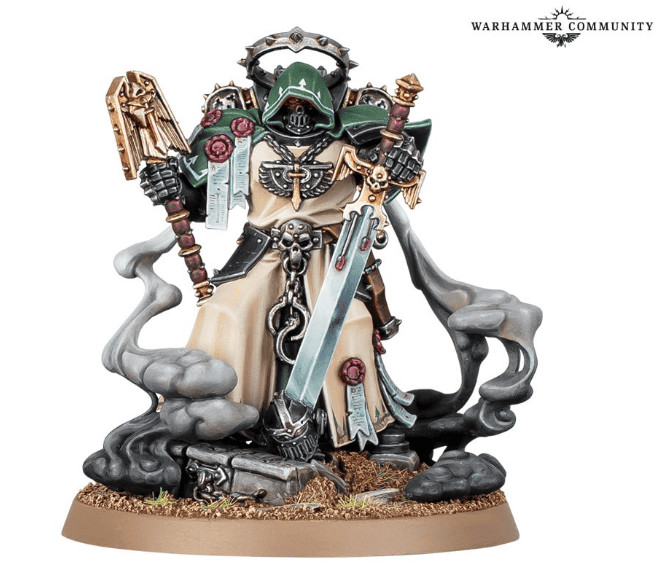
Lion El’Jonson: The Primarch Returns
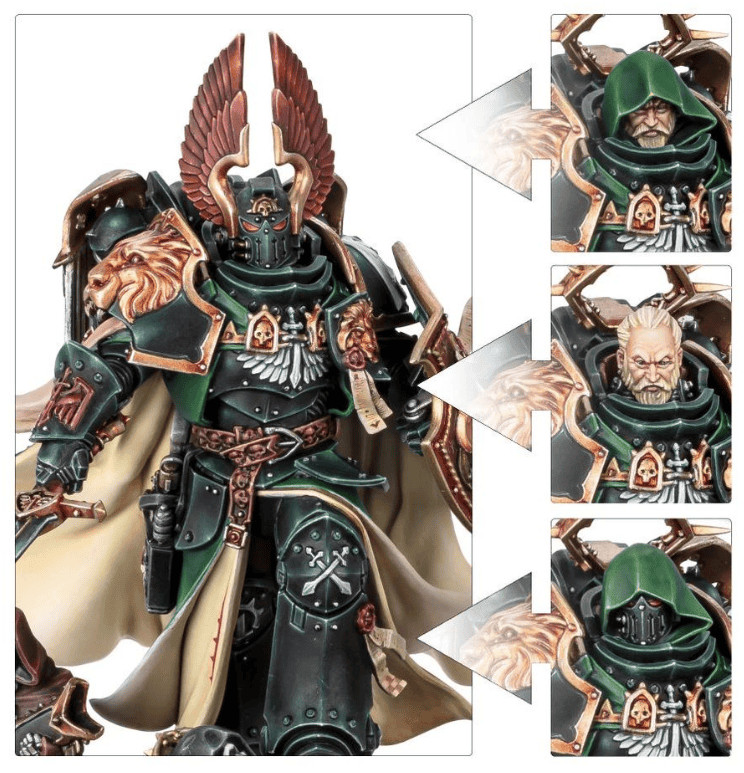
Uniting Themes Across Units and Characters
The Warhammer 40k Dark Angels art and aesthetic aren’t just for show—they reflect the thematic core of the army. The tension between their noble duties and their secretive hunt for redemption permeates every aspect of their identity. Whether it’s the knightly imagery of the Deathwing Terminators or the sleek, shadowy mobility of the Ravenwing 40k, the chapter offers a cohesive blend of lore and gameplay.
This unity extends to their models, which are a joy to paint and customize. From 40k Dark Angels painted in their iconic green to thematic additions like banners and heraldry, these units bring a striking presence to any tabletop. For those who love thematic armies with rich lore, the Dark Angels are a perfect fit.
The Artistic Side of the Dark Angels

Dark Angels 40k Art and Aesthetics
The Warhammer 40k Dark Angels art reflects the chapter’s duality—a mix of knightly valor and grim secrecy. Their imagery often features towering Space Marines in power armor, wielding ornate weapons and standing amidst gothic ruins. These pieces don’t just look stunning; they tell a story of an ancient order bound by duty and haunted by betrayal.
Armor Colors and Symbolism
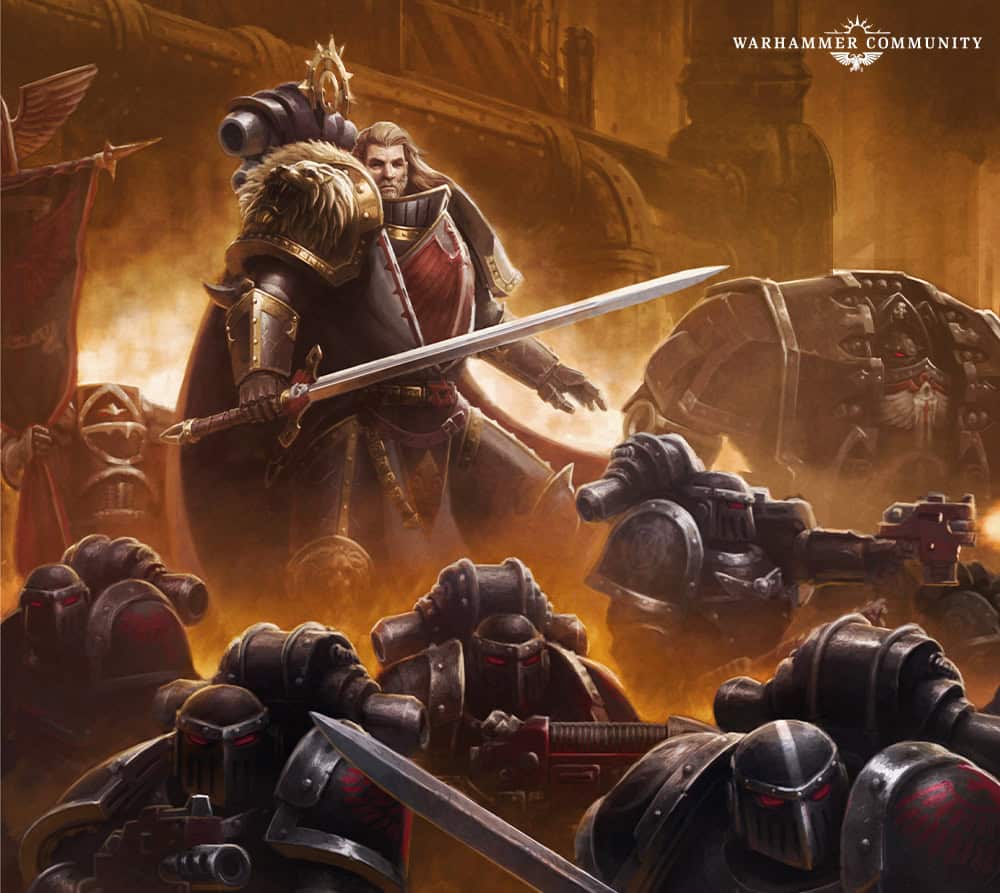
Each squad, from the Tactical Squad 40k to the mighty Dark Angels Dreadnought, is adorned with intricate details like robes, winged motifs, and chapter symbols. These elements not only enhance their aesthetic but also serve as a nod to their medieval inspiration.
Posters and Artwork
If you’ve ever seen a Dark Angels 40k poster, you’ll know just how evocative the chapter’s imagery can be. These posters often feature the stoic warriors standing against apocalyptic backdrops, their weapons raised in defiance of the galaxy’s countless horrors. Iconic characters like Azrael 40k or Lion El’Jonson are frequently depicted, their commanding presence inspiring awe in fans and players alike.
These pieces aren’t just wall decor—they’re a source of inspiration for players building their armies or planning their next Combat Patrol Dark Angels game. Whether it’s the gothic grandeur of the chapter’s homeworld or the stark drama of a battle scene, these artworks capture the essence of the Warhammer 40k Dark Angels army.
Creating Your Dark Angels 40k Poster

Step 1: Choose a Theme
Decide on the focus of your poster. Do you want to highlight a specific unit, like the Deathwing Knights or Ravenwing 40k squads, or perhaps a famous character such as Asmodai or Lion El’Jonson? Maybe you’d prefer to depict a battle scene that encapsulates the chapter’s heroism and secrecy.
Step 2: Incorporate Iconic Symbols
The chapter’s imagery is rich with symbolic elements that can elevate your poster. Robes, winged icons, swords, and the chapter badge are all excellent additions that immediately signal the Dark Angel 40k theme. Don’t forget to include their motto or a relevant quote from the lore to add depth and context.
Step 3: Use Inspiration from Official Art
The official 40k Dark Angels art from Games Workshop 40k provides a treasure trove of inspiration. Look at existing posters, codex covers, and other published materials to guide your design choices. Pay attention to the lighting, composition, and color schemes used in these pieces to make your creation feel authentic.
Step 4: Make It Personal
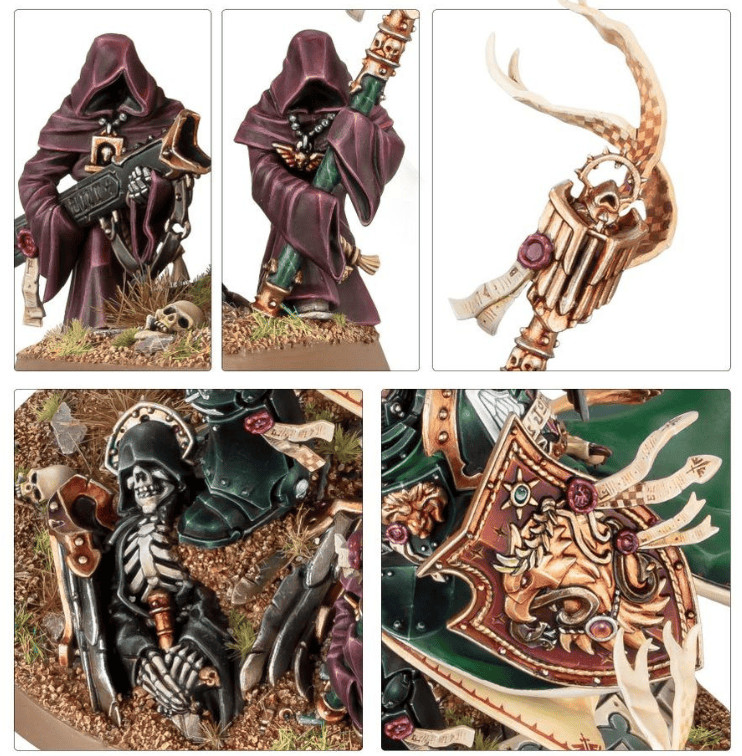
Step 5: Bring It to Life
Once your design is ready, choose a printing option that brings out the richness of the Warhammer 40k Dark Angels art. High-quality prints on matte or glossy paper can transform your digital creation into a striking physical piece. Frame it or hang it in your hobby space to celebrate your passion for the chapter.
The artistic side of the Dark Angels 40k is as rich and compelling as their lore. From painting guides that bring their models to life to stunning art and posters that showcase their gothic elegance, this chapter is a feast for the eyes and the imagination. Whether you’re building a collection of Space Marines or simply admiring their iconic imagery, the Warhammer 40k Dark Angels never fail to leave an impression.
The Legacy and Future of Dark Angels in Warhammer 40k
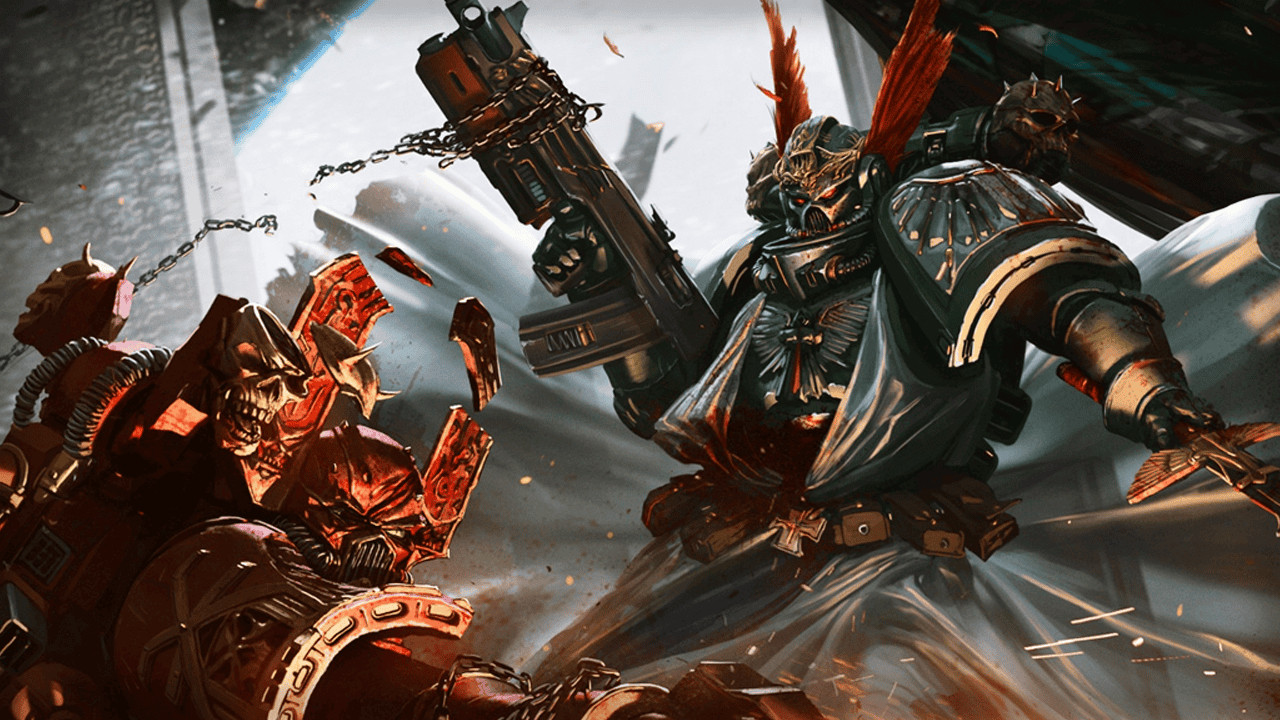
FAQs & The Future of Dark Angels in Warhammer 40k
Why Are the Dark Angels Known for Their Secrets?
The Dark Angels 40k army is defined by their eternal quest to hunt the Fallen Angels 40k, those who betrayed the Emperor during the Horus Heresy. This shameful history is a closely guarded secret, known only to the highest ranks of the Inner Circle 40k. Their secrecy adds an air of mystery and moral complexity to the chapter, making them one of the most intriguing factions in the game.
What Role Does Lion El’Jonson Play in Their Lore?
Lion El’Jonson, the Primarch of the Dark Angels, is a towering figure in their lore. Known for his tactical brilliance and enigmatic personality, the Lion’s return in the ongoing storyline of Warhammer 40k Dark Angels has revitalized the chapter’s prominence. His leadership and moral struggles mirror the duality of the Dark Angels themselves, making him a compelling character both in the lore and on the tabletop.
What Are the Key Units in a Dark Angels Army?
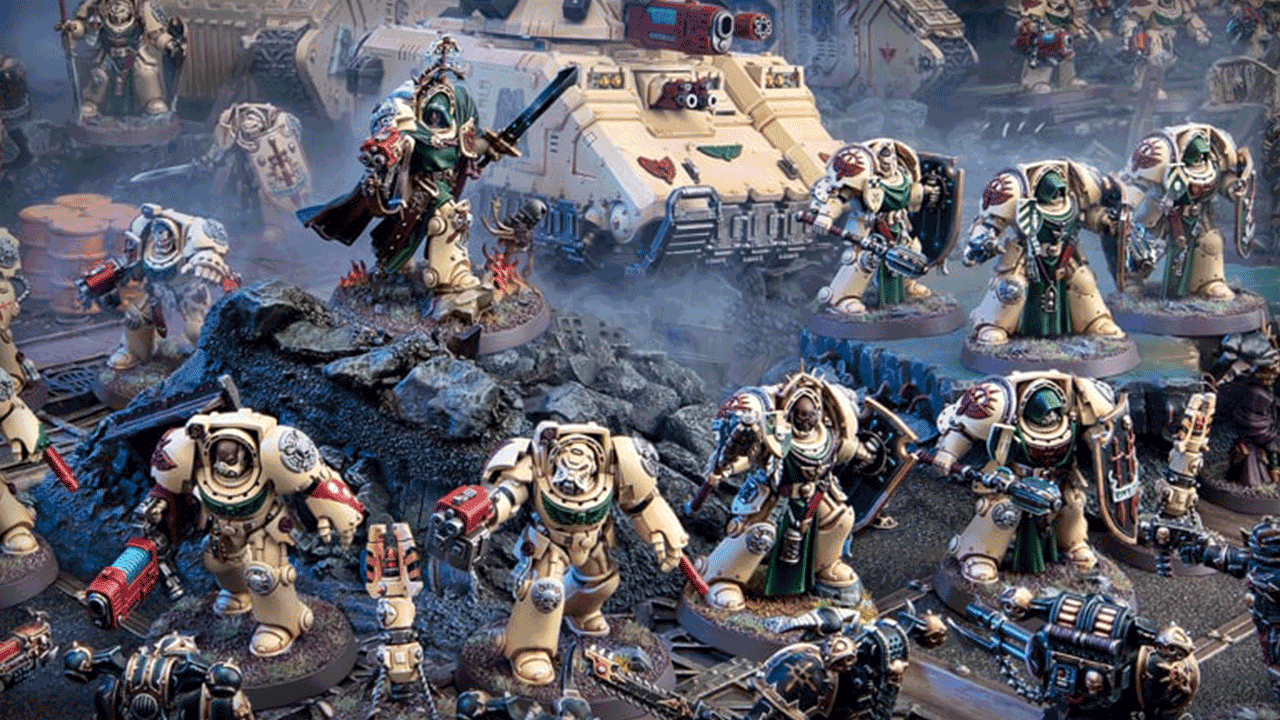
Are Dark Angels a Good Army for Beginners?
Absolutely. The Combat Patrol Dark Angels setup is a great starting point for new players. Their durability, straightforward playstyles, and strong synergy between units make them approachable for newcomers. Meanwhile, their depth and lore-rich background ensure they remain engaging for experienced players.
What’s Next for the Dark Angels?
With the ongoing updates in Warhammer 40k, the Dark Angels successor chapters and the return of Lion El’Jonson suggest even more exciting developments. As Games Workshop continues to expand the lore and gameplay options, fans can look forward to new models, stories, and strategies to explore in the future.
Resources for Further Exploration
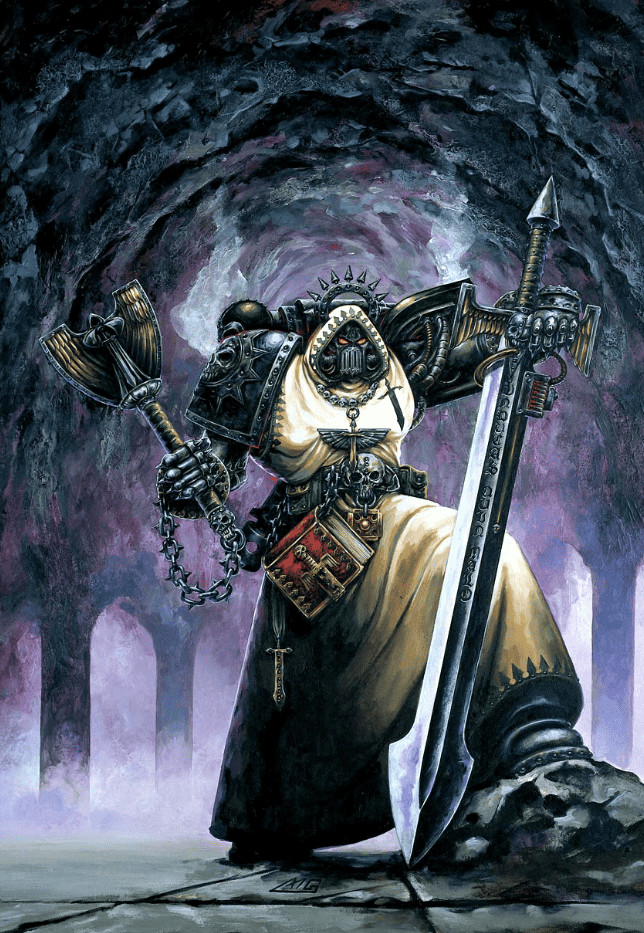
- Codices and Supplements
The official codices and chapter supplements are the definitive guides for building and playing a 40k Dark Angels army. They’re filled with lore, stats, and strategies to help you get the most out of your forces. - Dark Angels Books 40k
The Warhammer 40k Dark Angels books offer a wealth of narrative depth. From tales of the Horus Heresy Dark Angels to stories of their modern campaigns, these novels bring the chapter’s struggles and triumphs to life. - 40k Painting Guide
Want to recreate the iconic look of 40k Dark Angels painted models? A good 40k painting guide is invaluable. These resources provide step-by-step instructions for achieving the chapter’s signature green, black, and bone-white color schemes. - Dark Angels 40k Poster and Art
For fans of the chapter’s visual aesthetic, Dark Angels 40k art and posters are a must-have. They showcase the gothic grandeur of the chapter and can inspire your own army builds and painting projects. - Gaming Communities and Forums
Joining online communities or attending local events is a great way to connect with other fans of the Dark Angel Warhammer 40k chapter. Platforms like Reddit, Discord, and official forums are excellent for sharing tips, discussing lore, and showcasing your army.
The Dark Angels 40k are a chapter that invites passion, creativity, and strategic thinking. With their unique blend of lore, aesthetics, and gameplay, they remain a cornerstone of Space Marines in the Warhammer 40k experience. Whether you’re drawn to their mystery, their power, or their artistry, there’s no denying their lasting impact on the grim darkness of the 41st millennium.
Warhammer 40k Factions Explained: A Complete Guide to Every Army
What do you think about the Dark Angels Space Marines in Warhammer 40k? Do you like their playstyle, Lion El’Jonson, and units?
